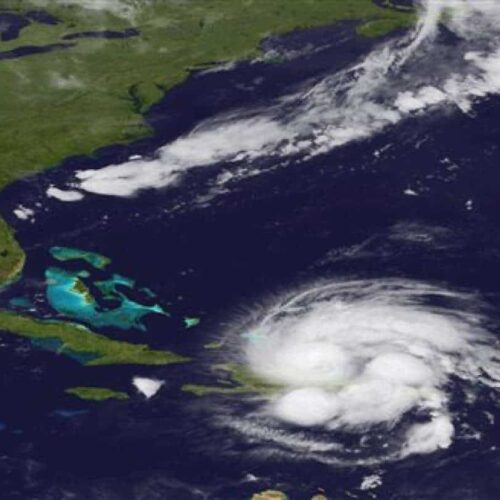Introduction
As Hurricane Irene bore down on the East Coast, the nuclear industry assured the public that the storm wouldn’t damage the dozens of reactors in its path. The industry’s watchdogs also expressed less concern about the hurricane’s potential impact on nuclear reactors than about the vulnerability of the exposed connections between them and the rest of the world.
One concern surrounds the electric grid – the lines that transmit power to cities and homes. Another concern is the reliability of electricity that supplies the reactors themselves, and ensures safe operation of the plant. (For other more likely nightmare scenarios, see iWatch News‘ investigations of the risk of earthquakes and fires.)
“Nuclear power plants are the most robust facilities in the U.S. infrastructure, with reactor containment structures composed of steel-reinforced concrete that have proven their ability to withstand extreme natural events,” said the Nuclear Energy Institute, an industry group, in a statement on Friday, as Hurricane Irene was closing in on the mid-Atlantic.
“It’s counterintuitive for most people that nuclear power plants need electricity from the outside for the safety systems to function,” said Jim Riccio, an energy policy analyst at Greenpeace, which opposes nuclear power. “But as we’ve seen from Fukushima, if you don’t cool the core, you have serious trouble on your hands and eventually a meltdown.”
Nuclear reactors require constant cooling, even when plants are not generating electricity, as will be the case for nuclear plants along the East Coast during Hurricane Irene. The Nuclear Regulatory Commission (NRC) requires reactors to go into shutdown mode at least two hours before the onset of hurricane-force winds, typically between 70 and 75 miles per hour.
But if these plants lose power in the course of the storm – as in Japan, where an earthquake followed by a tsunami knocked out the backup generators at the Fukushima Daiichi nuclear plant – the fuel rods can overheat, causing an uncontrolled nuclear reaction. The massive amount of radiation released during the partial meltdown at Fukushima may soon force the Japanese government to declare the area around the plant uninhabitable.
The Nuclear Energy Institute acknowledges the possibility that one or more nuclear power plants may lose power during the course of Hurricane Irene, but says each reactor will have at least seven days’ worth of fuel to power the backup generators.
“The concern is that you have such a massive storm that you basically wipe out the grid to the point where you can’t restore power,” Riccio said.
It is not unprecedented for nuclear plants to lose power and transportation links for days at a time in the wake of severe hurricanes. A 1993 report on Hurricane Andrew noted that the Turkey Point nuclear power plant in Florida lost offsite power for more than five days and the access roads to the facility were blocked by downed trees and utility poles.
If the power goes out along the Eastern seaboard for a long period of time, there is a risk that nuclear plants’ backup generators could run out of fuel. Or, Riccio added, the backup power could fail like one of them did Tuesday after the earthquake knocked out electricity to the North Anna nuclear power plant in Virginia.
That recent earthquake may have also put facilities at greater risks during Hurricane Irene. Nuclear plants have sensitive leak detection systems, but “if the earthquake caused piping to become weak, then that’s something that the hurricane could take the rest of the way to failure,” said David Lochbaum, a former nuclear engineer and director of the Union of Concerned Scientists’ nuclear safety project.
Even if the generators stay on or the power doesn’t go out to the nuclear reactors, there’s another risk – human error. For example, when restarting the St. Lucie nuclear power plant in Florida after Hurricane Jeanne, the utility company found that reactor auxiliary building doors had been left open during the storm. Although this mistake did not harm the public, an NRC report on the 2004 hurricane season noted that the doors provided access to an important cooling water surge tank.
Overall, hurricanes have prompted less cause for concern at nuclear plants than other issues, such as the NRC’s delay in assessing the risk from earthquakes near the nation’s reactors and recurring fires that could trigger a series of cataclysmic events — again, for instance, because of the loss of electricial connections or dependable switches.
Read more in Environment
Environment
SLIDESHOW: The tar sands struggle
Activists’ fight against the Keystone XL pipeline leads to two high-profile arrests
Environment
State officials ignored scientists in approving pesticide
Calif. pesticides manufacturer finds warnings from scientists too ‘excessive’ to be credible


Join the conversation
Show Comments